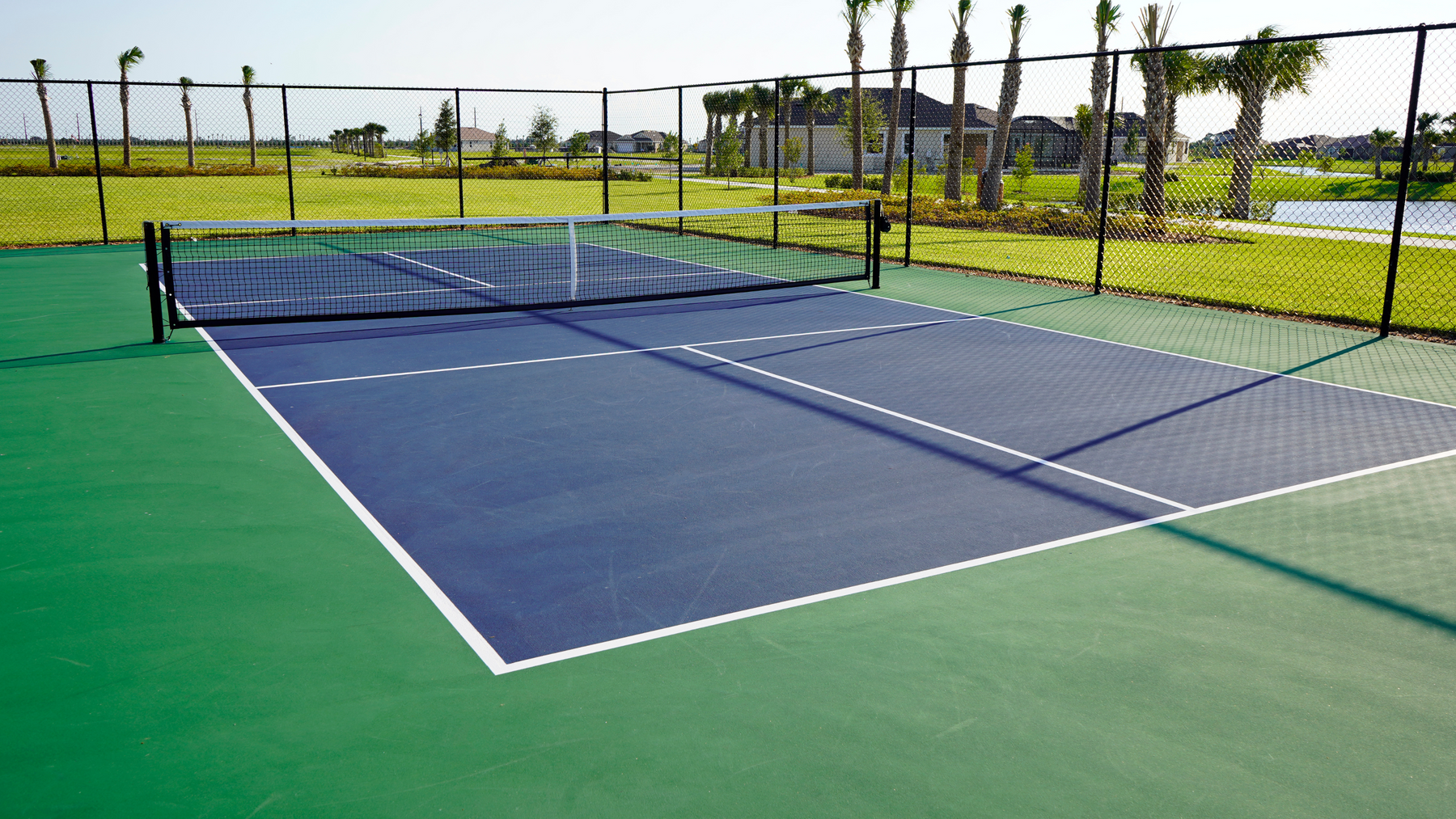
Understanding Pickleball Court Dimensions and Markings
Pickleball, a dynamic and engaging sport that seamlessly blends elements of tennis, badminton, and ping-pong, has been captivating players since its inception in the mid-1960s in Washington State. Known for its accessibility and family-friendly nature, pickleball has seen a surge in popularity, drawing in players of all ages and skill levels. A key aspect of mastering pickleball lies in understanding the dimensions and markings of its court, which significantly impact gameplay and strategy.
Table of Contents
1. Court Dimensions and Zones
A standard pickleball court is defined by its precise measurements: 20 feet in width and 44 feet in length (6.10 meters by 13.41 meters). Within this area, unique zones are marked, each with its own set of rules. The 'non-volley zone' or 'kitchen', extending 7 feet from the net and spanning the court's width, is a critical area where volleying is prohibited. Surrounding the kitchen are the service areas, each measuring 10 feet in width and 15 feet in length, from where players serve diagonally across the court and engage in volleys once a rally is underway.
2. Net Specifications
The height of the pickleball net is slightly lower than that of a tennis net, measuring 36 inches at the sidelines and 34 inches at the center. This height differential plays a vital role in the game's dynamics, allowing for a variety of shot types and strategies.
3. Playing Surfaces
Versatility is a hallmark of pickleball, as it can be played on various surfaces. These include concrete, asphalt, wooden indoor floors, and even grass. Outdoor courts are often temporary installations on existing tennis courts, while indoor courts might use specialized sports surfaces. The choice of surface influences the ball's bounce and players' movement, adding a layer of complexity to the game.
4. Comparison with Tennis Courts
When juxtaposed with tennis courts, the smaller dimensions of pickleball courts become evident. Being 80% narrower and 77% shorter, pickleball courts demand quick reflexes and strategic positioning from players. This size difference also makes it feasible to set up pickleball courts within the confines of existing tennis courts.
5. Converting Tennis Courts for Pickleball
Tennis courts can be adeptly modified for pickleball. The orientation of the court is crucial; ideally, pickleball courts should avoid east-west alignments to prevent sun glare issues. A single pickleball court can be marked out on either side of a lowered tennis net, or two courts can use the tennis court's centerline as the pickleball court's centerline. For maximizing space, four pickleball courts can be delineated on one tennis court, with careful consideration of the spacing between the courts and the outer boundaries.
Understanding the dimensions and markings of a pickleball court is not just about measurements; it's about comprehending the play area's influence on the game's tactics and player movements. Whether you're a seasoned player or new to the sport, grasping these aspects is key to fully enjoying and excelling in pickleball. As the sport continues to grow in popularity, this knowledge becomes essential for players and enthusiasts alike, ensuring that the game is played correctly and enjoyably on courts that adhere to standard dimensions and markings.
6. Frequently Asked Questions
-
Can pickleball be played on any surface?
Yes, pickleball can be played on a variety of surfaces including concrete, asphalt, wooden indoor sports floors, Astroturf, clay, and even grass. However, the type of surface can affect the ball's bounce and the players' movements. -
Are the dimensions for singles and doubles play in pickleball the same?
Unlike tennis, pickleball uses the same court size for both singles and doubles play, which is 20 feet wide by 44 feet long. -
How high is a regulation pickleball net?
A regulation pickleball net is 36 inches high at the sidelines and dips to 34 inches in the center. -
What is the non-volley zone in pickleball?
The non-volley zone, often referred to as the 'kitchen,' is a 7-foot zone on either side of the net where players are not allowed to volley the ball (hit it out of the air before it bounces). -
How do you adapt a tennis court for pickleball play?
You can adapt a tennis court by using temporary line-marking equipment to delineate pickleball court boundaries and lowering the tennis net to pickleball net height. The orientation should ideally be north-south to avoid sun glare. -
Can multiple pickleball courts fit on a tennis court?
Yes, up to four pickleball courts can be set up on a single tennis court, depending on the desired layout and the amount of space available. -
What are the key differences between a pickleball court and a tennis court?
A pickleball court is smaller than a tennis court, measuring 20 feet wide by 44 feet long for both singles and doubles. In contrast, tennis courts are 78 feet long and 27 feet wide for singles, expanding to 36 feet wide for doubles play. -
Is there a difference between indoor and outdoor pickleball courts?
A8: The main difference between indoor and outdoor pickleball courts is the playing surface. Indoor courts often use a specialized polyurethane sport surface, while outdoor courts may be on concrete or other durable materials. -
What equipment is needed to mark a pickleball court on a tennis court?
A9: To mark a pickleball court on a tennis court, you need line-marking tape or paint, a portable pickleball net (if not using the existing tennis net), and possibly modular court tiles for added grip and reduced impact. -
What should be considered when setting up a pickleball court to ensure fair play?
A10: Proper court dimensions and clear markings are essential. Additionally, consider the sun's position to minimize glare for players and ensure the net is set to the correct height. Regular maintenance of surface and markings will also ensure fair play.

